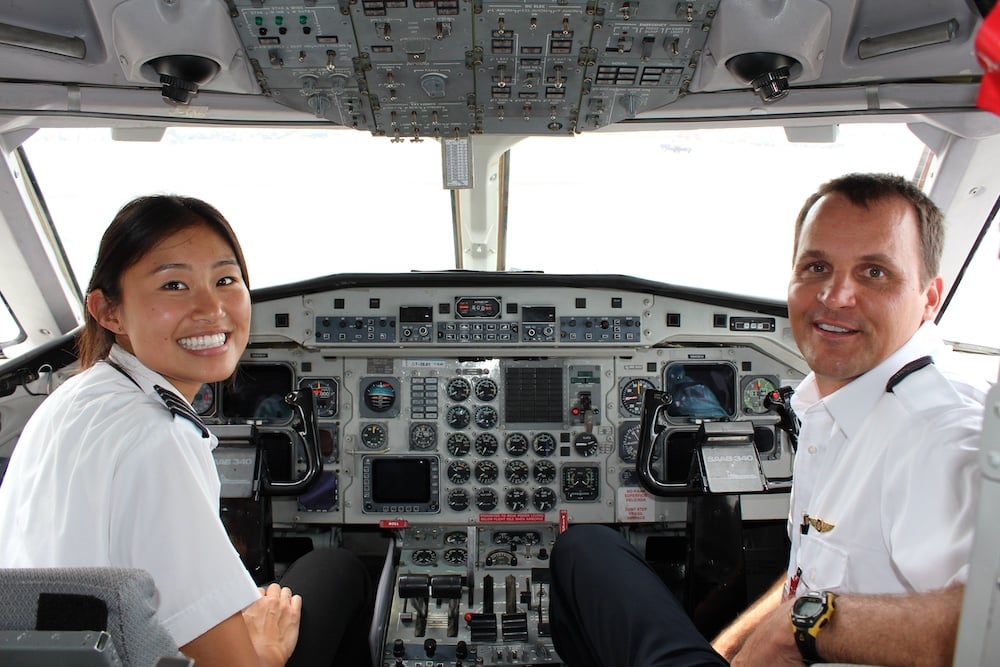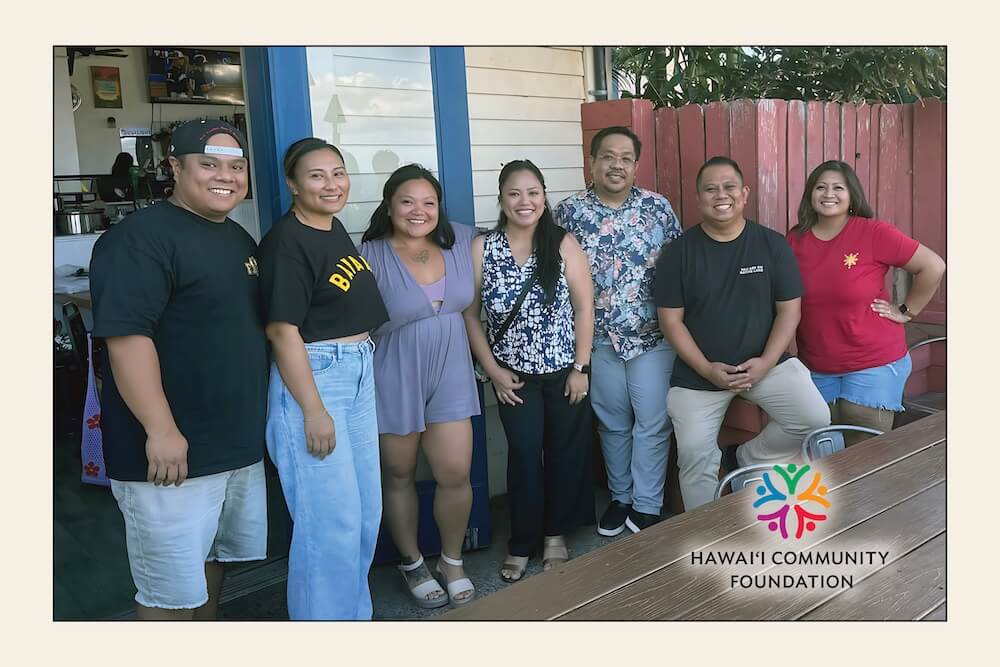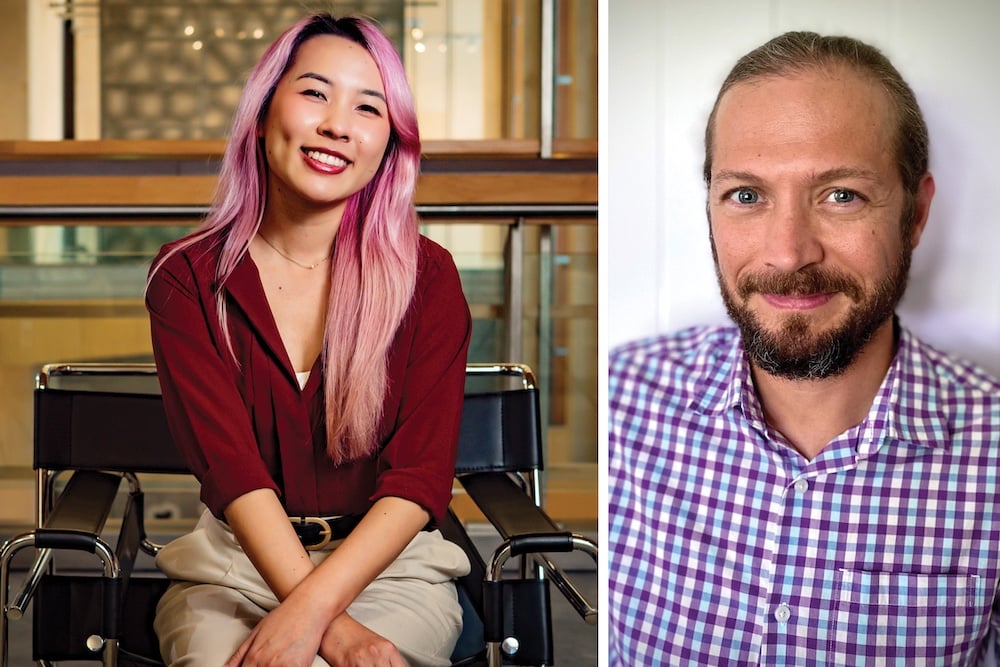West Oʻahu Magazine 2022
Building quality education, health care infrastructure, and a competitive workforce are essential to create a thriving community. Here are the individuals and companies that are committed to elevating West Oʻahu.

Photo: David Croxford
 The University of Hawaiʻi West Oʻahu is an anchor institution that leads in partnership with a network of local and international community and business partners, as well as city and state government agencies, to create a movement of learning and action that will grow our West Side region by provoking change in constructive ways. At the core of this effort, we are committed to strengthening families and generating vibrant, healthy, and abundant neighborhoods. Our unique signature programs at UH West O‘ahu, in particular, our early childhood and K-12 teacher preparation programs, as well as our cybersecurity/information technology programs, seek to foster energetic innovations in a holistic way. They connect people to advanced technologies and data and more strongly impact learning outcomes and critical strategies that tackle, in novel ways, the challenges of our 21st century.
The University of Hawaiʻi West Oʻahu is an anchor institution that leads in partnership with a network of local and international community and business partners, as well as city and state government agencies, to create a movement of learning and action that will grow our West Side region by provoking change in constructive ways. At the core of this effort, we are committed to strengthening families and generating vibrant, healthy, and abundant neighborhoods. Our unique signature programs at UH West O‘ahu, in particular, our early childhood and K-12 teacher preparation programs, as well as our cybersecurity/information technology programs, seek to foster energetic innovations in a holistic way. They connect people to advanced technologies and data and more strongly impact learning outcomes and critical strategies that tackle, in novel ways, the challenges of our 21st century.
Our value proposition places the learner at the center of all our efforts to maximize their ability to be career creators, the leaders we have been waiting for. Hence, everything we do – from student services, academic programming, and administrative transactions – all foster values of rigor, excellence, and community. This commitment has become a shared kuleana (responsibility) that invites our learners and our partners to work together to enrich and uplift higher learning for all. Because the kuleana of higher education is shared – engaging faculty, learners, and community – learning happens across multiple settings on and off our campus, and engages and creates leaders who are empowered and committed to cultivating humanity and pono (good).
We welcome you to learn more about the 21st century programs at UH West O‘ahu and join us on our journey to elevate our community and those around us!
E malama pono!

Dr. Maenette K.P. Benham
Chancellor, UH West Oʻahu
TABLE OF CONTENTS
Preparing Tomorrow’s Workforce
Greater Access to Care
Building Quality
Company Profiles:
Pali Momi and Straub Medical Center Clinics
Kaiser Permanente
Hawaiʻi Insurance Division, Department of Commerce and Consumer Affairs
Island Ready-Mix
Preparing Tomorrow’s Workforce
College and high school students seeking these certificate and degree programs are almost guaranteed to find a job quickly.
Educational opportunities are growing in West O‘ahu. It’s a space that is thriving as companies and schools are working together to cultivate talent for jobs that have shortages or are in high demand.
In recent years, the University of Hawai‘i West O‘ahu (UHWO) has added the Administration and Health Science building, and opened the Academy for Creative Media building. But there are many more interesting program options that cover careers looking for great talent.
UHWO offers a certificate program in Risk Management and Insurance, where students are provided training in personal and commercial lines of insurance. Courses cover retirement planning, liability insurance, business law, health insurance, risk financing techniques and more.
“Everyone thinks insurance means you’re going to sell insurance. No, that’s one part of it, one small part of it. There are so many different areas of risk management insurance that students or people can venture into,” says Edward Keaunui, the Assistant Professor of Business Administration at UHWO. He is also the Risk Management and Insurance Coordinator.
“From the time you jump into your vehicle and you start driving, that’s already a risk you’re taking,” Keaunui continues. “You want to protect yourself for everyday events that may or may not come up, and at the same time, you have peace of mind that if something does happen, you have protection in place, you have the plans in place to address it.”
Colin Hayashida, Insurance Commissioner for the Department of Commerce and Consumer Affairs (DCCA) hopes that the certificate program will one day become a major of study at the university as well. Hayashida is head of the Hawai‘i Insurance Division that regulates Hawai‘i’s insurance industry, and says that Hawai‘i’s insurance regulators and the insurance industry are competing against candidates who have a choice to work on the continent.
“If one day we can get a major, then that would provide tremendous benefit to high school graduates, as well as the insurance industry,” Hayashida says. “Insurance is a very vital part of our economy. If you look at any economy, it’s broken into securities, which is stocks and investments, banking, and insurance. And if an economy doesn’t have that then it starts to deteriorate.”
Prior to the pandemic, the DCCA has participated as speakers at the university to give students an understanding of how insurance is rated and the process to allow insurance or companies to operate in the state of Hawai‘i. It gives another perspective to an industry that needs strong talent working in the Islands.
“When you realize how dependent we are on the insurance industry and being in the middle of the Pacific and dealing with Pacific Rim countries, the potential for Hawai‘i to be a gateway in this field is tremendous,” Hayashida says.
Also at UHWO, the Bachelor of Science in Cybersecurity recently launched in fall 2020, following exponential growth and increased interest of students in the Bachelor of Applied Science Information Security and Assurance degree program.

Student from UH West O‘ahu’s cybersecurity program. | Photo: courtesy of UH West Oʻahu
Both programs give students the tools to succeed in a cyber career, with courses in computer science and engineering, math, and information security, but the BS degree adds another layer of complexity.
“There are more requirements for advanced math and there are five additional advanced highly technical cybersecurity courses,” says Matthew Chapman, Professor of Computer Science and Cybersecurity, and head of UHWO’s cybersecurity program.
“One of the things that all the political administrations have agreed upon since 9/11 is the importance to defend our nation’s critical infrastructure,” he says. “We developed a program to meet the workforce needs of the country.”
A recent Microsoft study from October 2021 found “there are 464,200 open jobs in the United States that require cybersecurity skills.” Chapman says his students work hard, and graduates would be qualified for any cybersecurity job.
“Graduates coming out of the UH West O‘ahu cybersecurity programs basically have a job before they graduate if they want one, because the demand is so high,” Chapman continues. “There are so many shortages, and this program is one of the best in the country.”
In 2020, UHWO cybersecurity students were ranked 12th in the nation, according to the National Cyber League. The League, which ranks schools across the country, is a competition among students across the United States. In addition to finishing 12th overall, three UHWO student teams placed in the top 10% nationally.
To benefit high school students, nonprofit health care system Hawai‘i Pacific Health is partnering with the Hawai‘i Department of Education to help increase the number of medical assistants in Hawai‘i. Its Medical Assistant program at Waipahu High School was launched in 2018 at a time when other medical assistant programs in the state were shutting down.
The rigorous program, which is offered tuition free, is best suited for high school seniors and includes two semesters of course-work and 225 hours of externships. All students must complete an application and pass the interview process before being selected.
“They’re getting all of this training and then they have an opportunity every Saturday to go into one of our clinics and practice their clinical skills along with other students and other MAs,” says Carl Hinson, Director of Workforce Development at Hawai‘i Pacific Health. “At the end of the program, they do a 225-hour externship, and then they sit for their certification exam, and then they can begin working for pay.”
Waipahu High School acts as the hub for Leeward and Central O‘ahu. High school students from Waipahu, Leilehua, ‘Aiea, Campbell, Pearl City and Kapolei have already participated in the program.
“Graduates coming out of the UH West O‘ahu cybersecurity programs basically have a job before they graduate if they want one because the demand is so high.”
Matthew Chapman, Professor of Computer Science and Cybersecurity
“It has been a huge success. We’ve got a 100% national certification pass rate with three classes in a row and we have high expectations for year number four,” says Hinson, adding that he doesn’t have any need or desire for the program to ever end given the shortages for this position in Hawai‘i.
Eunice Fukunaga, Assistant Principal of the Academy of Health & Science at Waipahu High School, sees the difference it has been making for the students.
“One of the mothers actually told us that her daughter who graduated from this program is now making more hourly than she is,” says Fukunaga. “This opportunity is life changing for some of our kids. And so they’re able to work as medical assistants, help pay their way through college, and help support their family.”
Greater Access to Care
Health care providers are creating new ways to increase accessibility to its programs and services for West O‘ahu residents.
Hawaiʻi Pacific Health started its COVID-19 vaccination efforts in December 2020 at its Straub and Kapi‘olani Medical Center clinics, and then decided to do more for the community on the West Side.
“We were thinking we’ve got to figure out a way to get closer to the community,” says Carl Hinson, Director of Workforce Development at Hawai‘i Pacific Health. “We started at the high schools and then once the under 16 (age group) got approved, we started looking at middle schools and then we expanded to the community from there.”
Hawai‘i Pacific Health went on to complete drive-through vaccination events at Kapolei High School, where 813 people were vaccinated the first weekend, including 374 children ages 5 to 11.
In May 2021, Hawai‘i Pacific Health additionally created a mobile vaccination program utilizing its Vax Squad Bus.
“We’ve got three buses going out every day, whether it’s elementary schools or community locations or businesses every day, seven days a week now,” says Hinson.
Anyone can walk in to the events listed on Hawai‘i Pacific Health’s website and get a COVID-19 vaccine or booster, and the Vax Squad Bus carries all vaccines: Pfizer, Moderna, and Johnson & Johnson.
High school students taking part in Hawai‘i Pacific Health’s Medical Assistant Program at Waipahu High School (see page 49) also get to participate in the vaccination process.

Hawai’i Pacific Health’s Vax Squad Bus, a mobile vaccination clinic. | Photo: courtesy of Hawaiʻi Pacific Health
“I’m pretty confident we’re going to continue through the first quarter of 2022,” Hinson says of the vaccination efforts. “At least for now there’s enough demand and we still are only at 72% statewide, and that includes our 5- to 11-year-olds. There’s still a large percent of our population that needs to be vaccinated.”
Since Hawai‘i Pacific Health’s vaccination efforts began, it has vaccinated a total of 300,000 people, including 13,420 keiki.
Located in Kapolei, the Kaiser Permanente Kīpukaoha facility (West O‘ahu Medical Office) is also focused on understanding the needs of the West Side community.
“We have this beautiful facility here in Kapolei that’s grounded in this NextGen technology and really trying to do what we can do to merge that technology, the teamwork collaboration with culturally grounded programs and different community partnerships to really help to achieve equity for our West Side community and also help to eliminate care disparities,” says Dr. Marcus Iwane, MD Chief for Kaiser Permanente.
Culturally grounded programs include the outdoor garden and pathway named Kealahoolaupa‘i. It has different garden beds with traditional healing plants, a tea garden, and dryland kalo patches.
Kalo that was planted in March 2021 was harvested in the fall by volunteers, physicians and staff. It was the first-ever kalo harvest at a Kaiser Permanente facility.
Kaiser Permanente believes medicine only accounts for a small portion of a patient’s overall health. Social disparities, such as housing, education, food security all play a role and it’s important to address all aspects.

Two dozen physicians, providers and staff help in Kaiser Permanente’s Kīpukaoha Office’s first kalo harvest in Kapolei. The kalo had been planted in March 2021 before the clinic opened. | Photo: courtesy of Kaiser Permanente
“If you look at the overall life expectancy of our folks in West O‘ahu, the average life expectancy is just about 75 years. When you compare that to other areas of O‘ahu, just 50 miles down the road in Honolulu, there can be a 10-year difference in life expectancy,” says Iwane.
“In our opinion, your life expectancy should never be determined on where you live or grow up. A lot of our folks here in West O‘ahu, they are of Native Hawaiian descent, Pacific Islander descent, Filipino descent and sadly our native and indigenous peoples, Pacific Islanders and Filipinos suffer from amongst the highest rates of chronic illness when compared to other ethnicities across the state.”
These chronic illnesses can include diabetes, heart disease, obesity and hypertension.
“We’re really trying to focus on understanding what our community needs and figuring out how we can as a health care system provide those services to our members and our larger community in general,” says continues Iwane. “Not just Kaiser Permanente but for the entire Kapolei and and West Side communities.”
Another unique part of Kīpukaoha’s facility is it has Kaiser Permanente’s first community engagement center. The space is dedicated to the community and is available for organizations to use the space to bring people together.
“It’s actually providing the space to have these discussions,” says Iwane. “That’s how we can build trust with not only our Kaiser Permanente members, but our community, our community partners. And then we can begin to focus on really understanding how we can achieve social health and equity.”
Building Quality
While the pandemic may have hurt some industries, Hawai‘i’s construction industry has stayed busy. West O‘ahu in particular saw the completion of new homes, including at D.R. Horton’s master planned-community Ho‘opili which broke ground in 2016.
“It’s a massive project and there’s different phases,” says Steven Lee, marketing specialist for Island Ready Mix Concrete, Inc. The locally owned and operated concrete company has been working with Ho‘opili from the beginning and continues to work on additional phases there.

Photo: courtesy of Island Ready-Mix Concrete
Island Ready Mix Concrete, Inc. projects also include the Honouliuli Wastewater Treatment Plant and residential slabs, driveways, retaining walls and sidewalks.
In an effort to be eco-friendly, the company has incorporated a CarbonCure system, which injects captured carbon dioxide into the concrete and reduces the amount of carbon-intensive cement in the mix.
“We’ve always explored new technologies and we’re trying to do our part to stay green,” says Lee.
“Because of our location, we’re ideally situated to handle all the needs of West O‘ahu,” he continues. “We’ve seen the West Side grow, and we’re excited to be a part of the growth.”
Company Profiles
Pali Momi and Straub Medical Center Clinics
Serving Central and West O‘ahu, Quality Care Close To Home
Pali Momi Medical Center and Straub Medical Center Clinics are improving patients’ access to high-quality health care in Central and West O‘ahu. Patients can get the care they need, when and where they want it, and close to home.
Pali Momi has established a standard of care that is nationally recognized. In 2021, Pali Momi was ranked as the best hospital in the country for outcomes by Lown Institute. Of the 3,012 hospitals in the ranking, Pali Momi was the most successful at clinical outcomes, patient safety and patient satisfaction.
Hawai‘i Pacific Health (HPH) has committed to making health care convenient on the west side of O‘ahu with 13 new centers and clinics connected to Pali Momi and Straub. The health care services that have resulted from these additions include: cancer care, cardiac, ear, nose and throat, endocrinology, neurosurgery, orthopedic, plastic surgery, urology, weight management, telemedicine, primary care and urgent care.
Neighboring clinics have always extended Straub’s community reach. Recently remodeled spaces include: Straub’s Pearlridge Clinic and Mililani Town Center Clinic. The newest clinic on the west side is Straub’s Mililani Shopping Center Clinic. Straub’s Kapolei Clinic and Urgent Care makes it easy to see a doctor after work, since it is open until 8 p.m.
The expanded presence of HPH for health care, whether at Pali Momi or Straub centers and clinics, reflects HPH’s mission to create a healthier Hawai‘i.
Kaiser Permanente
Kaiser Permanente’s West O‘ahu Medical Office at Kapolei is Now Open
The future of health care is here. Kaiser Permanente’s West O‘ahu Medical Office at Kapolei brings more services, convenience, and high-quality care to West O‘ahu’s growing community.
The 40,000-square-foot facility offers primary care, mental health services, imaging, lab, pharmacy, women’s health, and prevention and wellness programs, with urgent care and extended hours for greater convenience. The state-of-the-art facility links doctors and members to the latest technologies in a spacious, soothing environment designed for healing.
The West O‘ahu Medical Office at Kapolei is the first facility in Hawai‘i to use the NextGen Health Hub care model, which integrates care into our members’ lives and enhances the health care experience by featuring technology that helps maximize members’ visits, evolves in response to their changing health care needs, supports care team collaboration and contributes to providing high-quality care.
Residents of West O‘ahu can rest assured knowing they have options for COVID-19 prevention close to home. The West O‘ahu Medical Office at Kapolei offers appointments for COVID-19 testing and vaccinations.
Our commitment to total health extends beyond the doctor’s office to improve the well-being of the communities we serve. We designed the West O‘ahu Medical Office at Kapolei to provide care and services under one roof, so members have the convenience of visiting their doctors, getting X-rays or lab tests, and picking up prescriptions all at the same place.
Learn more at kp.org/westoahu
Hawaii Insurance Division, Department of Commerce and Consumer Affairs
The Hawaii Insurance Division our state’s insurance industry, which writes $23.5 billion in annual premiums and includes more than 1,600 insurance companies and 80,000 insurance producers. The division ensures that commercial and individual consumers have a vibrant and competitive market for the insurance products they need with rates commensurate to their risk and responsive claim handling by regulating the Hawaii insurance industry, issuing licenses, examining the fiscal condition of Hawaii-based companies, and reviewing rate and policy filings. In addition, we investigate complaints, prosecute insurance fraud, and provide consumer information.
I have been with the division for more than 20 years and I am proud to be working alongside the hardworking men and women of the Hawaii Insurance Division. We come from diverse backgrounds, but have one thing in common—we are all dedicated to serving the public and committed to being a resource for our community.
Colin M. Hayashida, Insurance Commissioner, State of Hawaiʻi
Island Ready-Mix Concrete
One more year of COVID! Hopefully we learn to live and work around it a lot better. In 2022, we expect the supply chain issues will be resolved so that we can resume our utilization of the Carbon Cure technology that helps us reduce our carbon foot-print. We also look forward to continued work in and around West O‘ahu, with residential projects, such as Ho‘opili and the planned 345-acre commercial and industrial project at Kapolei Harborside.






